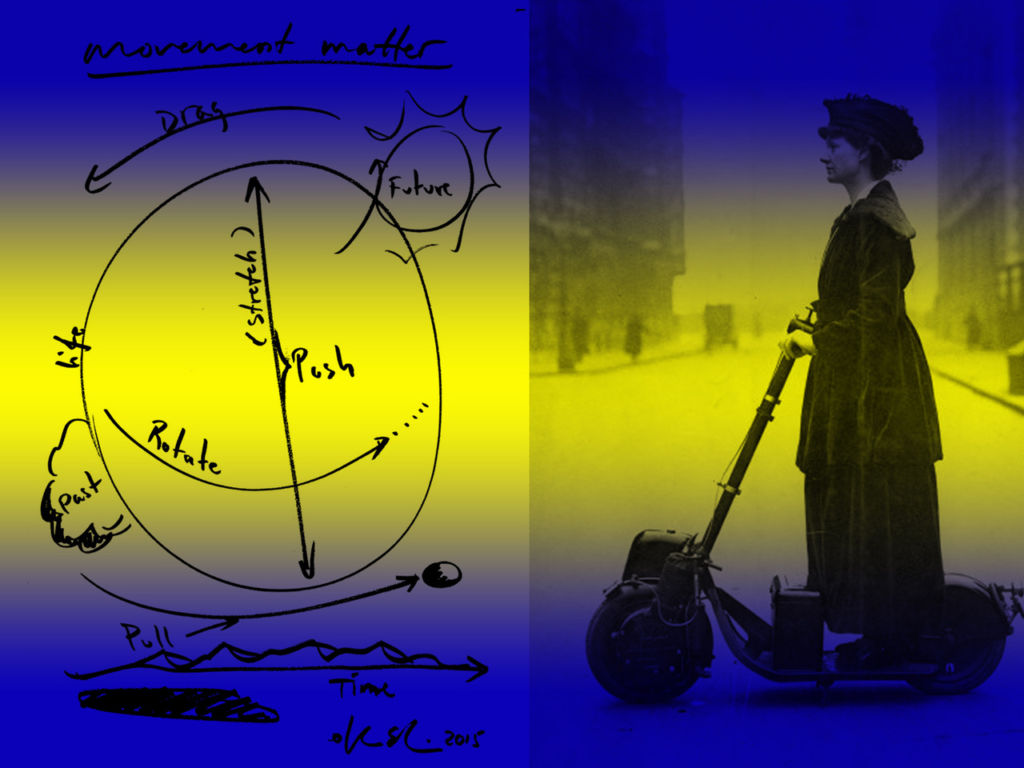Entwurfsprojekt
ab 5. Semester BA
Anpassungsstudium MA
Lehrende
Prof. Franziska Schreiber
KM Lars Paschke
LB Elise Gettliffe
LB Stephanie Penkov
Gäste
Straße des 17. Juni 118:
Montag + Dienstag 10-18
Vorlesungsbeginn
21.10.19 11:00
Bauhaus Pavillion,
Ernst-Reuter Platz
“When the day after tomorrow is yesterday,
then today will be as far from Wednesday
as today was from Wednesday
when the day before yesterday was tomorrow.
What day is today?”
Fashion and time are interlinked. Temporality itself and temporal references are key characteristics of the field. Fashion has always been a highly referential system, juggling and tapping its own history in order to re-contextualize past, alter present and create future in vestimentary expressions. The pleasure of ephemerality lies at its core, constantly setting distinguishing lines between old and new identities, shifting and dissolving them as soon as they’re marked in time. Fashion has always been occupying the interim between past and future, blurring the lines between affirmation and distinction, between dejá-vu and jamais-vu.
Fashion-time seems not to be linear though, going from one point towards another; it rather doubles back on itself and one can find oneself surprisingly close to a historical period even though plenty of years have passed. It is like walking through a labyrinth, where points can be mutually proximate and distant as paths run close to each other. (Caroline Evans, 2007) However closely related a style revival or a reference might be to its original, it does undergo a contemporary shift, e.g. is subject to selective memory, temporary reading, to alterations in technique or to the new context it is being adopted to. Besides the semiotic re-interpretations and aesthetic mining of the past, fashion seems to underlie a change in its relation to time beyond design practice. Real-time purchase concepts challenge the basic temporal structure of fashion. Incubation time for creative processes is shortened. The digital revolution enhanced the coexistence of a multitude of proposals and the economic merry-go-round gave rhythmic seasonality the sack. The concept of Newness is difficult to define in a culture of availability. Missing linear time and chronological market periods, it is more difficult to sense a ‚Zeitgeist’ and forecast consumption patterns. Strategies of building distinctive identities have become ambiguous on mass scale.
Designers offer a reading of our time and propose a personal vision on future identities. This multitude of proposals holds account of the simultaneousness of potential futures as it holds account of the simultaneousness of different understandings of our present. Is there the potential for fashion to be an expert on time and temporality? How to use signifiers of time and the diverse historic narratives to inform the future? How to turn retro-formalism into pro-active future development?
In this project we will look into fashion’s own sourcing and the selection and management of past knowledge for future creation. Digitalism invented permanence and simultaneity. Aesthetic authorities are ambiguous. The fluid temporality in fashion might be a chance for developing personal perspectives on familiar sources.
Based on historical research we will analyse how to select, exploit and apply aesthetic sources. How to enrich inspiration with strategic power and conceptual ideation? How to create relevance? Are there similarities in living conditions, economics, political developments, technological innovation or identity politics compared to now? Where are similarities and where is difference? What contemporary context do we adapt a source to? What future vision do we intend to promote and which values are underlying principles? How do we enrich and expand the source with individual interest and interpretation?
We want to dissect and research in archaeological manner to find strategies and images valuable for future dressing. We want to learn to handle inspiration between individual untraceable taste and objective application on vestimentary outcomes. We want to create personal worlds and future scenarios based on the foundation of clothing research. We want to look into what kind of meaning and context is attached to the clothes we find. We want to research the making, their material reality, their geographical traces. We want to relate ourselves to them aesthetically as not being their contemporaries, but gazing at them from a distant, yet curious position of today. We want to project their values on future identities.
In 1937 the English fashion researcher James Laver attempted to compress the life cycle of fashion change in relation to contemporary taste into a simple timeline. Today this timeline itself seems dated. However, we want to use its suggestions as a base for research and discussion. We will surf between coincidence and control, between individualistic and collective knowledge, between option and duty. We want to discuss consistency and illogicality of stylistic effects. We want to research random, counter resources. We will intervene to provoke shifts. We want to discuss different perceptions of time, deconstruct and pervert temporality. Let’s hack the chains of time.
General Objective:
From three different historical periods referring to Laver’s Law, students are asked to individually choose and research outfits, their context and their making and argument their personal relation/attraction to the research. Based on this and on contemporary research, students are then asked to develop a speculative future scenario. Within this scenario a collection of 3 outfits will be developed and presented in an immersive format, e.g. an installation.
The project aims to experiment materially with historical predecessors and exercise the development of individual proposals, training both forecasting and artistic signature.
The project is supported by Converse.

